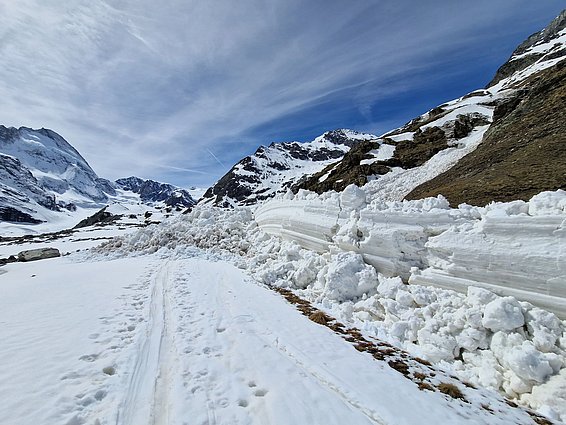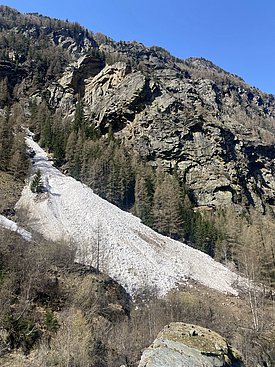An SLF analysis shows how climate change will affect the avalanche situation in Switzerland by the end of the century.
This text was automatically translated.
Less snow does not mean fewer avalanches. This is the result of a study by SLF researcher Stephanie Mayer. She has investigated the consequences of climate change on avalanche activity in Switzerland above 1,800 meters above sea level. "The number of dry avalanches will decrease, but above the tree line, the increase in wet snow avalanches will partially offset this decrease," predicts Mayer. She has calculated the consequences for various climate scenarios. Only in the worst-case scenario, which assumes a warming of average winter temperatures by around five degrees Celsius by 2100, will overall activity decrease. "But then by twenty to forty percent above the current tree line," says Mayer.
Ski resorts and avalanche warning services will face new challenges. Over the course of the century, wet snow avalanches will increasingly occur during the peak tourist season. In the case of wet snow avalanches, at least part of the snowpack in the avalanche start zone, the area in which the avalanche is released, has been moistened by melt or rain water. In contrast to their dry counterparts, however, avalanche safety services can hardly trigger wet snow avalanches artificially, explains Mayer: "The only safety measure that helps is to close endangered areas of a ski resort." Leisure sports enthusiasts should also pay more attention to the issue of wet snow avalanches, she says, as they become more frequent in high winter.
Mayer has calculated her scenarios for seven locations in Switzerland, including the Weissfluhjoch above Davos and a station near Zermatt at an altitude of around 2700 meters. However, she is certain that her results are transferable to the entire Alpine region. And to mountain ranges with similar climatic conditions, such as the Columbia Mountains in Canada.
The good news: due to rising temperatures, the associated higher snow line and less snow, avalanches could reach valley locations less frequently in future. However, this is not always the case. Extreme snowfall events will still occur in the future. This could even lead to larger avalanches, especially at high altitudes. If avalanches start at high altitudes and are channeled, they can still reach as far down into the valley as they do today. Nevertheless, Mayer expects the responsible authorities to review their hazard maps and, if necessary, adapt them to the changing hazard situation caused by climate change. The new climate scenarios (CH2025) should then also provide more precise analyses of future extreme situations.
Contact ¶
Copyright ¶
WSL and SLF provide image and sound material free of charge for use in the context of press contributions in connection with this media release. The transfer of this material to image, sound and/or video databases and the sale of the material by third parties are not permitted.

